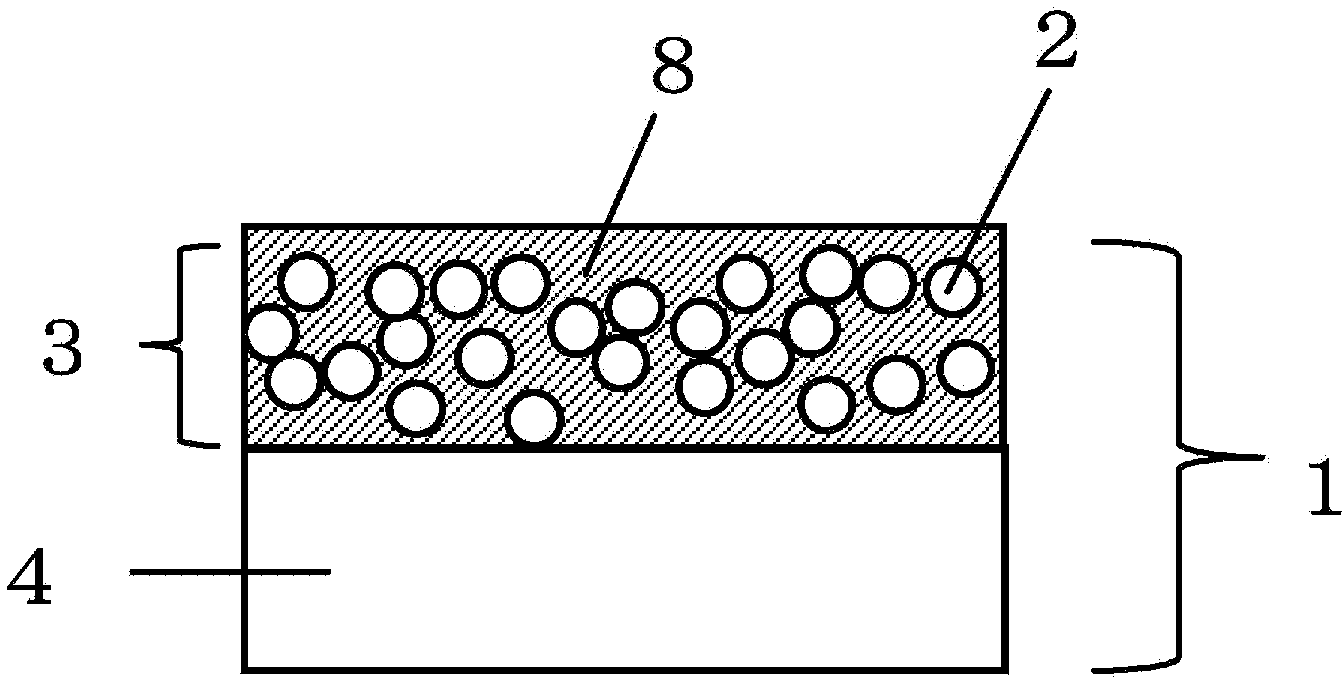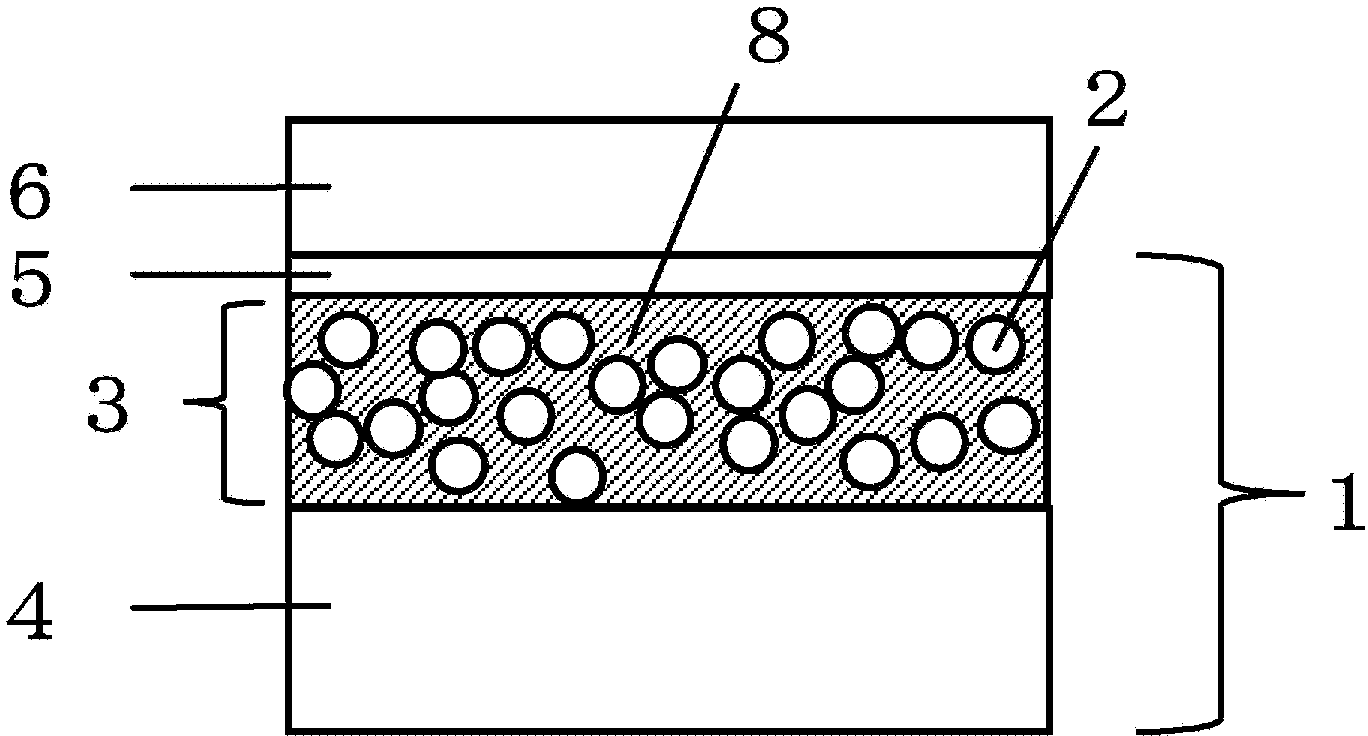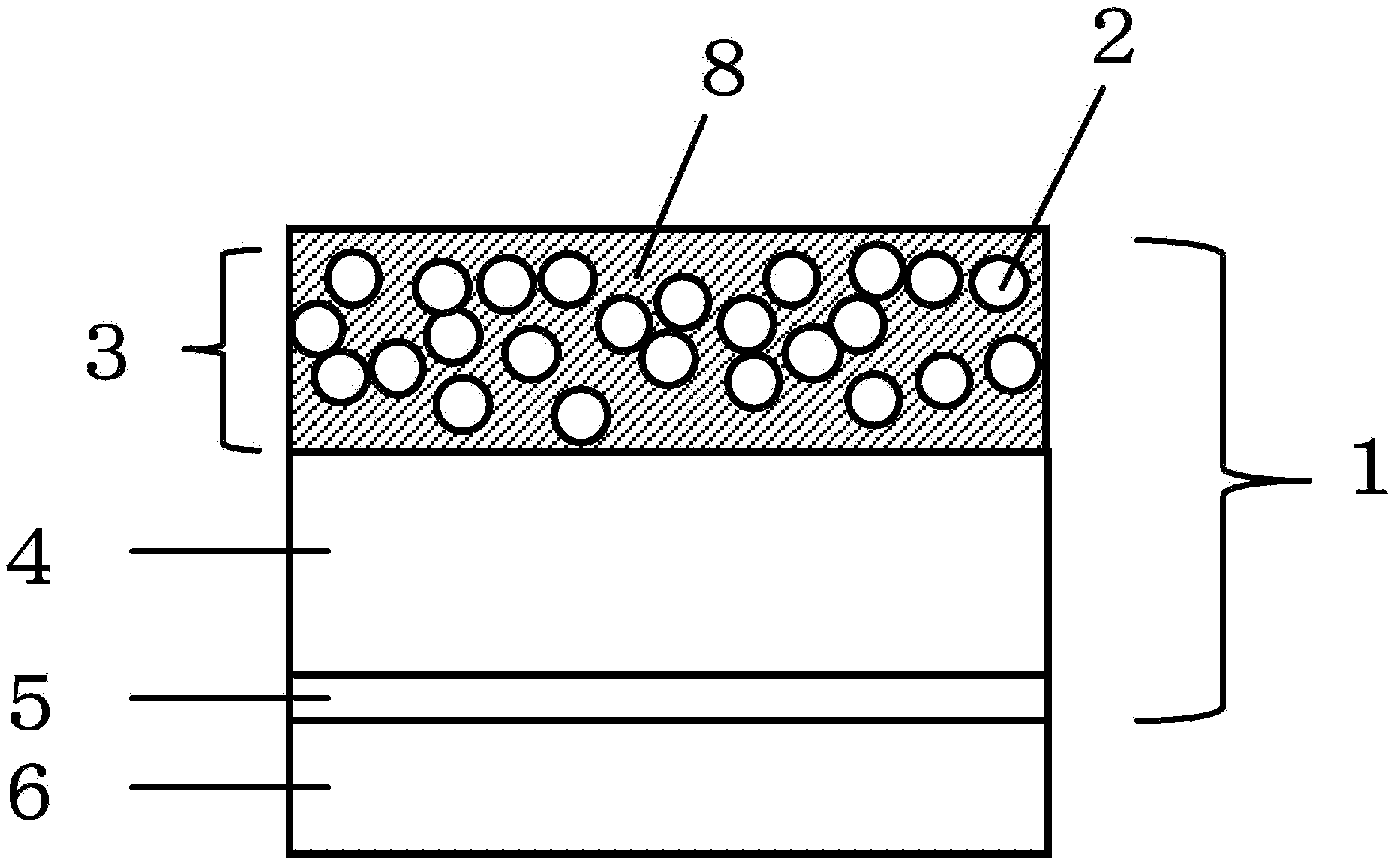Transmissive type screen
A transmissive screen technology, applied in TV, color TV, projection devices, etc., can solve the problems of non-transmissive screen use, screen opacity, etc., achieve uneven brightness and hot spot improvement, high image brightness, and field of view angle broad effect
- Summary
- Abstract
- Description
- Claims
- Application Information
AI Technical Summary
Problems solved by technology
Method used
Image
Examples
Embodiment 1
[0093] Using a slide bead coating device, the coating amount of solid content is 18.5g / m 2 A light-diffusing layer coating liquid 1 of the following composition was coated on one side of a transparent polyethylene terephthalate film (haze value 4%) with a thickness of 100 μm, blown with cold air at 10° C., and then Drying was performed by blowing hot air at 50° C. to produce the transmissive screen of Example 1. It should be noted that the void volume was 17 ml / m as measured using a mercury porosimeter (Autopore II 9220 manufactured by Micromeritics Instrument Corporation). 2 . The cross-section of the light-diffusing layer was observed with an electron microscope, and its thickness was measured to be 27 µm, and the porosity calculated from the above value was 64%. In addition, the specific surface area of the light-diffusing particles per unit area of the screen calculated from the average primary particle size and specific gravity is 4.2m 2 / m 2 .
[0094]
[0095...
Embodiment 2
[0108] A transmissive screen of Example 2 was produced in the same manner as in Example 1 except that the light-diffusing layer coating solution 1 of Example 1 was replaced with the following light-diffusing layer coating solution 2 . It should be noted that, according to the same operation as in Example 1, the measured porosity was 52%, and the specific surface area of the light-diffusing particles per unit area of the screen calculated from the average primary particle diameter and specific gravity was 4.2m. 2 / m 2 .
[0109]
[0110] 100 parts of silica dispersion 1 (calculated as silica solid content)
[0111] 60 parts of polyvinyl alcohol
[0112] (saponification degree 88%, average polymerization degree 3500)
[0113] 4 parts boric acid
[0114] 0.3 parts of nonionic surfactant
[0115] (polyoxyethylene alkyl ether)
[0116] Light-diffusing particles 7.2 parts
[0117] (OPTBEADS 500S)
[0118] The total solid content concentration was adjusted to 12% with w...
Embodiment 3
[0120] A transmissive screen of Example 3 was produced in the same manner as in Example 1 except that the light-diffusing layer coating solution 1 of Example 1 was replaced with the following light-diffusing layer coating solution 3 . It should be noted that, according to the same operation as in Example 1, the measured porosity was 49%, and the specific surface area of the light-diffusing particles per unit area of the screen calculated from the average primary particle diameter and specific gravity was 4.2m. 2 / m 2 .
[0121]
[0122] 100 parts of silica dispersion 1 (calculated as silica solid content)
[0123] 70 parts of polyvinyl alcohol
[0124] (saponification degree 88%, average polymerization degree 3500)
[0125] 4 parts boric acid
[0126] 0.3 parts of nonionic surfactant
[0127] (polyoxyethylene alkyl ether)
[0128] Light-diffusing particles 7.6 parts
[0129] (OPTBEADS 500S)
[0130] The total solid content concentration was adjusted to 12% with wat...
PUM
 Login to View More
Login to View More Abstract
Description
Claims
Application Information
 Login to View More
Login to View More - R&D
- Intellectual Property
- Life Sciences
- Materials
- Tech Scout
- Unparalleled Data Quality
- Higher Quality Content
- 60% Fewer Hallucinations
Browse by: Latest US Patents, China's latest patents, Technical Efficacy Thesaurus, Application Domain, Technology Topic, Popular Technical Reports.
© 2025 PatSnap. All rights reserved.Legal|Privacy policy|Modern Slavery Act Transparency Statement|Sitemap|About US| Contact US: help@patsnap.com



